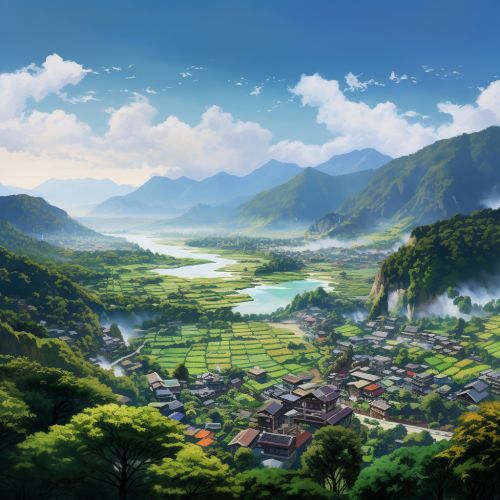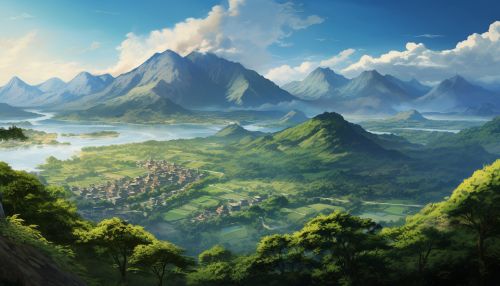Shikoku
Geography
Shikoku is the smallest and least populous of the four main islands of Japan. It is located south of Honshu and north of Kyushu, separated by the Seto Inland Sea and the Kanmon Straits respectively. The island is divided into four prefectures: Ehime, Kagawa, Kochi, and Tokushima.


Geology
The island is primarily mountainous, with the highest peak being Mount Ishizuchi in Ehime Prefecture. The Shikoku Mountain Range runs east to west across the island, dividing it into a narrow northern subregion, facing the Seto Inland Sea, and a southern part facing the Pacific Ocean. Shikoku's geological features have been shaped by the Philippine Sea Plate and Amurian Plate tectonic activities.
Climate
Shikoku experiences a humid subtropical climate, with mild winters and hot, humid summers. The Pacific side of the island receives heavy rainfall due to the Kuroshio Current, while the Seto Inland Sea side has a milder and drier climate.
Flora and Fauna
Shikoku's diverse ecosystems are home to a variety of flora and fauna. The island's forests, which include both deciduous and evergreen species, are inhabited by wildlife such as the Japanese macaque, Japanese serow, and various bird species. The coastal areas support a rich marine biodiversity, influenced by the warm Kuroshio Current.
History
Shikoku's history dates back to the Jomon period, with numerous archaeological sites providing evidence of early human habitation. The island played a significant role in the development of Buddhism in Japan, particularly with the establishment of the 88-temple Shikoku Pilgrimage. Shikoku was also a center of resistance during the Meiji Restoration, particularly in the Satsuma Rebellion.
Economy
Shikoku's economy is diverse, with key sectors including agriculture, fishing, and manufacturing. The island is known for its production of citrus fruits, particularly in Ehime Prefecture. Shikoku also has a significant industrial sector, with a focus on shipbuilding and petrochemicals. Tourism, particularly related to the Shikoku Pilgrimage, also contributes to the local economy.
Culture
Shikoku's culture is distinct from that of mainland Japan, with unique dialects, cuisine, and traditional arts. The island is known for its Awa Odori dance festival, held annually in Tokushima. Shikoku's cuisine features local specialties such as Sanuki udon and Jakoten.
Transportation
Shikoku is connected to Honshu by three expressways and multiple ferry routes. The island's transportation infrastructure includes the Shikoku Railway Company network and several regional airports. Despite its mountainous terrain, Shikoku has an extensive road network, including the scenic Shimanami Kaido cycling route.
